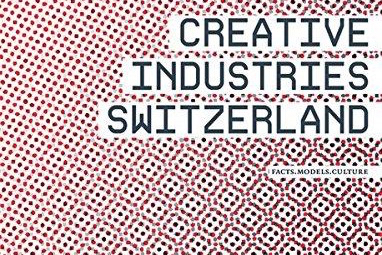Widening the Creative Industries Perspective
The structure and approach of the Creative Economy Report 2016
The title of the Creative Economy Report 2016, “From Creative Industries to Creative Economies”, points to a widening of the perspective beyond the narrow focus on business sectors that defines the established concept of creative industries. The structure and approach of the 2016 report reflects this shift to reframe Switzerland’s creative economies in a global perspective.
What is new about the 2016 report?
The goal of this report is to analyse and advance current developments in the creative economy at the intersection of culture, economy and technology.
The 2016 report continues the work of previous reports and publications on the creative industry in Switzerland, particularly our Creative Economy Report 2014. However, its goals, structure and content are also significantly different:
- It is intended as a “survey of the field” report, not as a finite or conclusive commentary on the creative economy in Switzerland or globally. It takes into account the dynamic and developing nature of the field by combining different forms of presentation and visualization based on the most recent public statistical data (from 2013).
- It aims to provoke discussion and provide the foundations for future developments in the practice and research of the creative economy in Switzerland. A key aspect of this is the shift from “creative industries” to “creative economies” – a term which the authors propose and define here in order to contextualize developments in Switzerland in a global perspective.
- It seeks to provide points of reference and concrete perspectives for actors within the field, enabling them to reflect on their practice and take relevant action within their respective contexts.
To establish this broad perspective, the report focuses on three key issues: first, an analysis of the data from the traditional creative industries perspective; second, a fresh analysis of the data based on “creative occupations” within a wider creative economy (including employment outside of the traditional creative industries); and finally, developing “creative economies” as a future-oriented model for the Swiss context, based on the new data and international trends.
The three key parts of the report
Part 1 continues the discussion as it is currently established in the Swiss context, using the concept of “creative industries” and its 13 submarkets based on previous reports. We combine statistical material with the voices of protagonists from the different sectors. The extensive use of visualizations is new for Switzerland. In accordance with international state of the art approaches, mapping methods complement the more narrowly focused numbers-based tables.
Part 2 introduces the terms “creative economy” and “creative occupations” for the Swiss context. Working closely with the London-based innovation agency Nesta, and the British Department for Culture, Media and Sport (DCMS), we adapted their methodologies to cross-reference Swiss industry sector statistics with employment data (Swiss Labour Force Survey) for the first time. We thereby combined the macro-perspective, with its focus on business sectors introduced above, with the dimension of the processes and practices of so-called “creative actors” on a micro-level. This enabled us to show that creative actors are in fact active outside the traditional sectors of the creative industries. Only about 50% of workers in the creative economy are employed in the traditional creative industries. These findings suggest new ways of interpreting and negotiating key concepts of the creative economy that may also impact policy and action in the field.
Part 3 focuses on the future. It presents scenarios and models based on the statistically grounded conclusions of the first two parts. The concepts introduced here are the result of an intensive discussion in the global context. They are applied to a Swiss context in order to assess and build on the results of the new data analysis. We therefore introduce the model of “creative economies” based on intersecting spheres and and actor-centric, context-specific approach to creative labour. The focus is on suggesting strategic perspectives and entrepreneurial opportunities for various actors in education, politics, research and particularly the creative economy, and to discover which questions are relevant to future development in the field.
The not-for-profit venture CreativeEconomies is developing suitable formats to intensify dialogue and generate knowledge about the questions facing the creative economies in Switzerland specifically. Further material will be continuously published on the website, expanding the discussion in an accessible way.
References
Bakhshi, Hasan/Freeman, Alan/Higgs, Peter (2013): A Dynamic Mapping of the UK’s Creative Industries. London: Nesta.
Department for Culture Media and Sport (2015): Creative Industries Economic Estimates: January 2015. London: DCMS.
Higgs, Peter/Cunningham, Stuart/Bakhshi, Hasan (2008): Beyond the Creative Industries: Mapping the Creative Economy in the United Kingdom. London: Nesta.
Weckerle, Christoph/Gerig, Manfred/Söndermann, Michael (2008): Kreativwirtschaft Schweiz, Daten – Modelle – Szene. Basel: Birkhäuser.
Weckerle, Christoph/Söndermann, Michael (2003): Kultur.Wirtschaft.Schweiz. Das Umsatz- und Beschäftigungspotential des kulturellen Sektors: Erster Kulturwirtschaftsbericht Schweiz. Zurich: HGKZ.
Weckerle, Christoph/Theler, Hubert (2010): Dritter Kreativwirtschaftsbericht Zürich. Published by Zurich University of the Arts.




